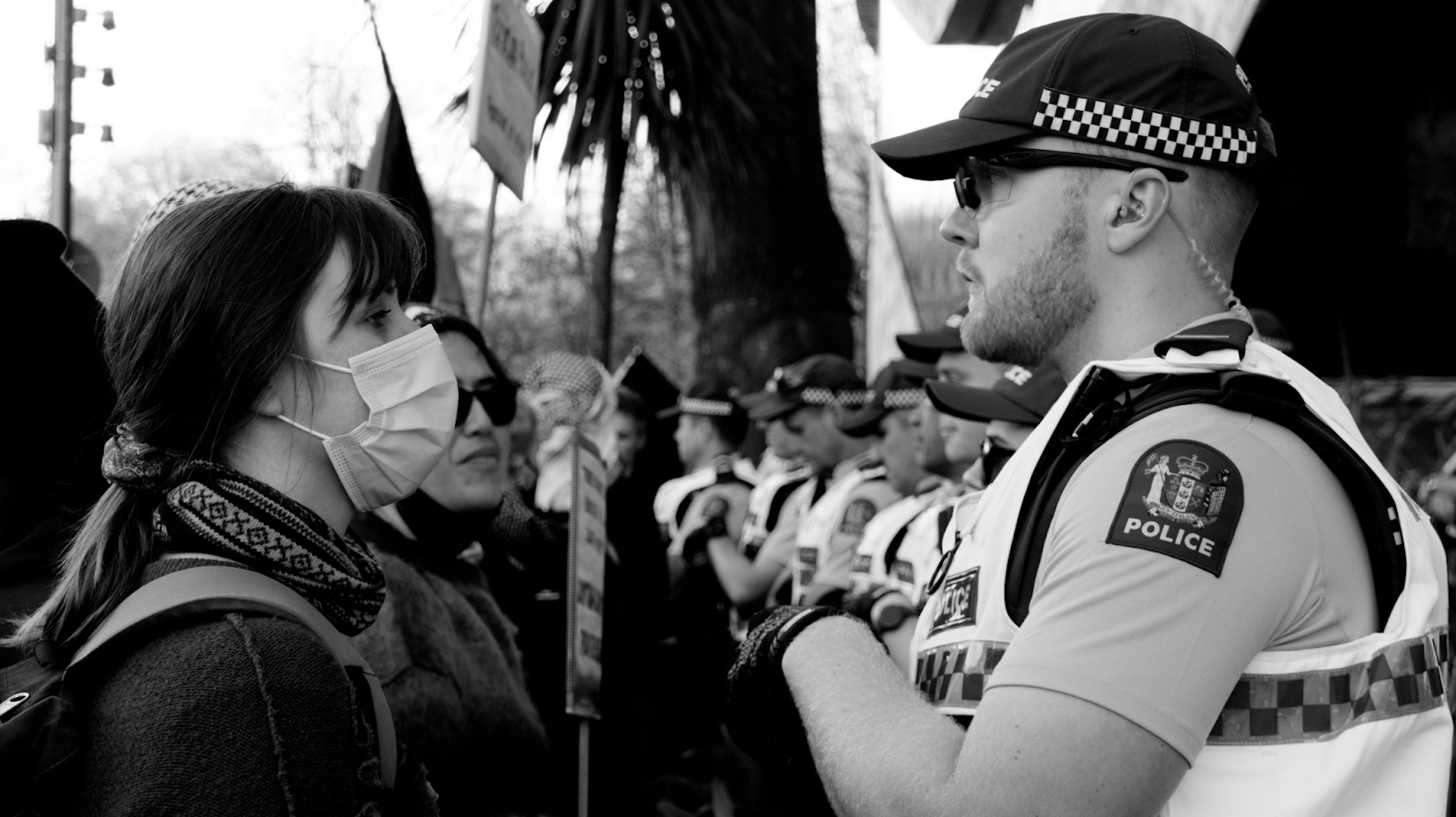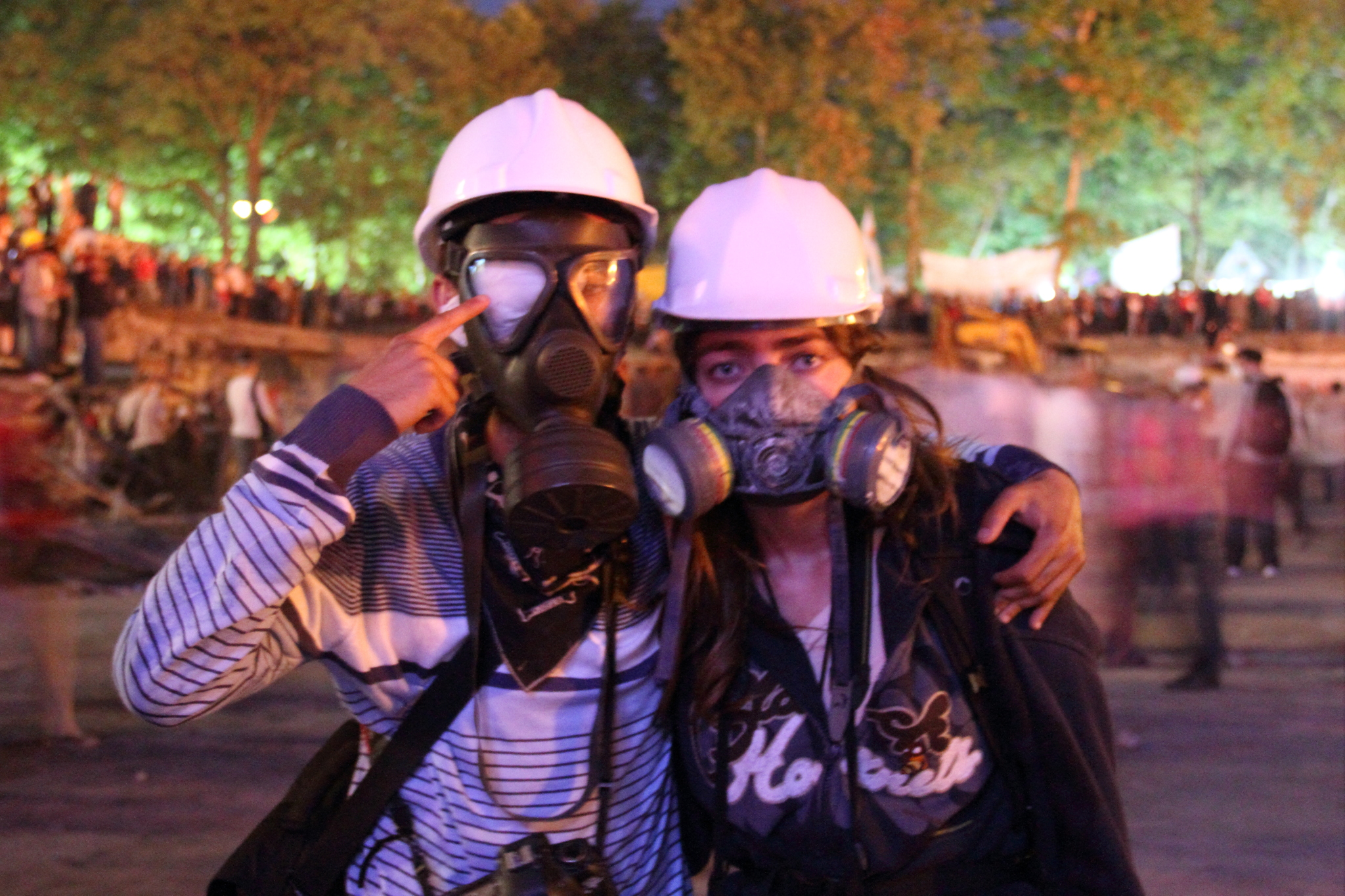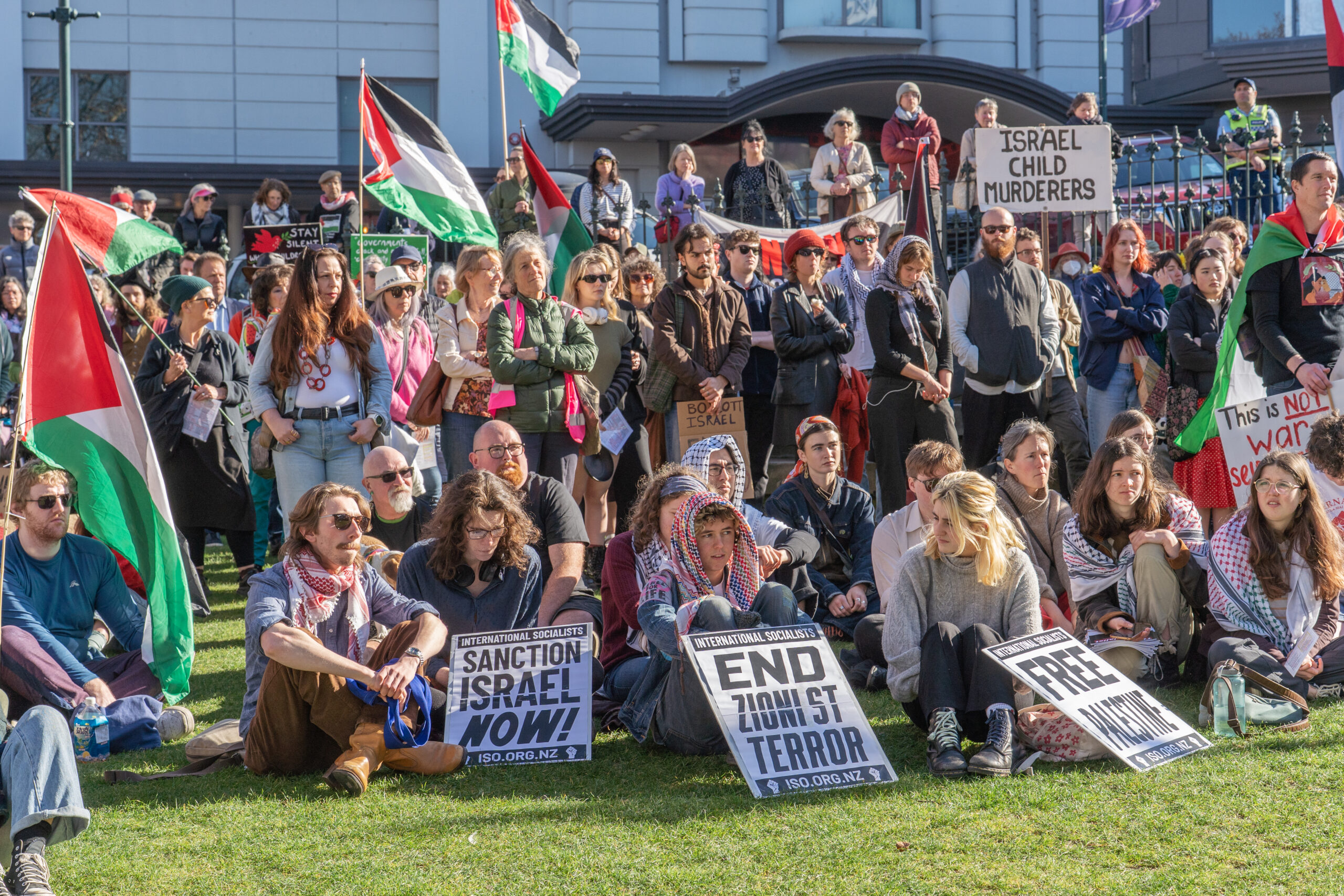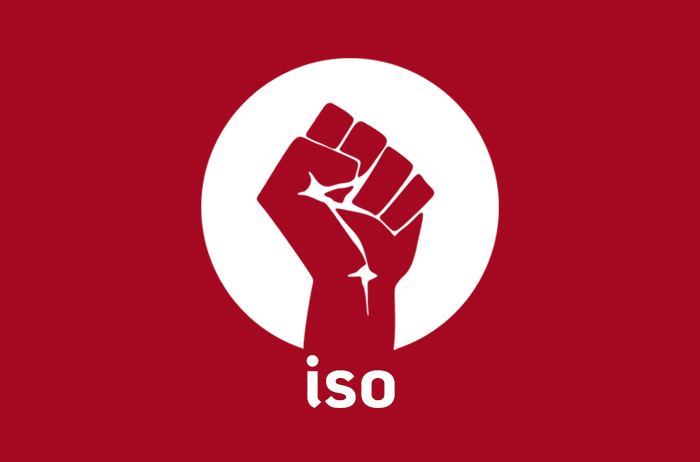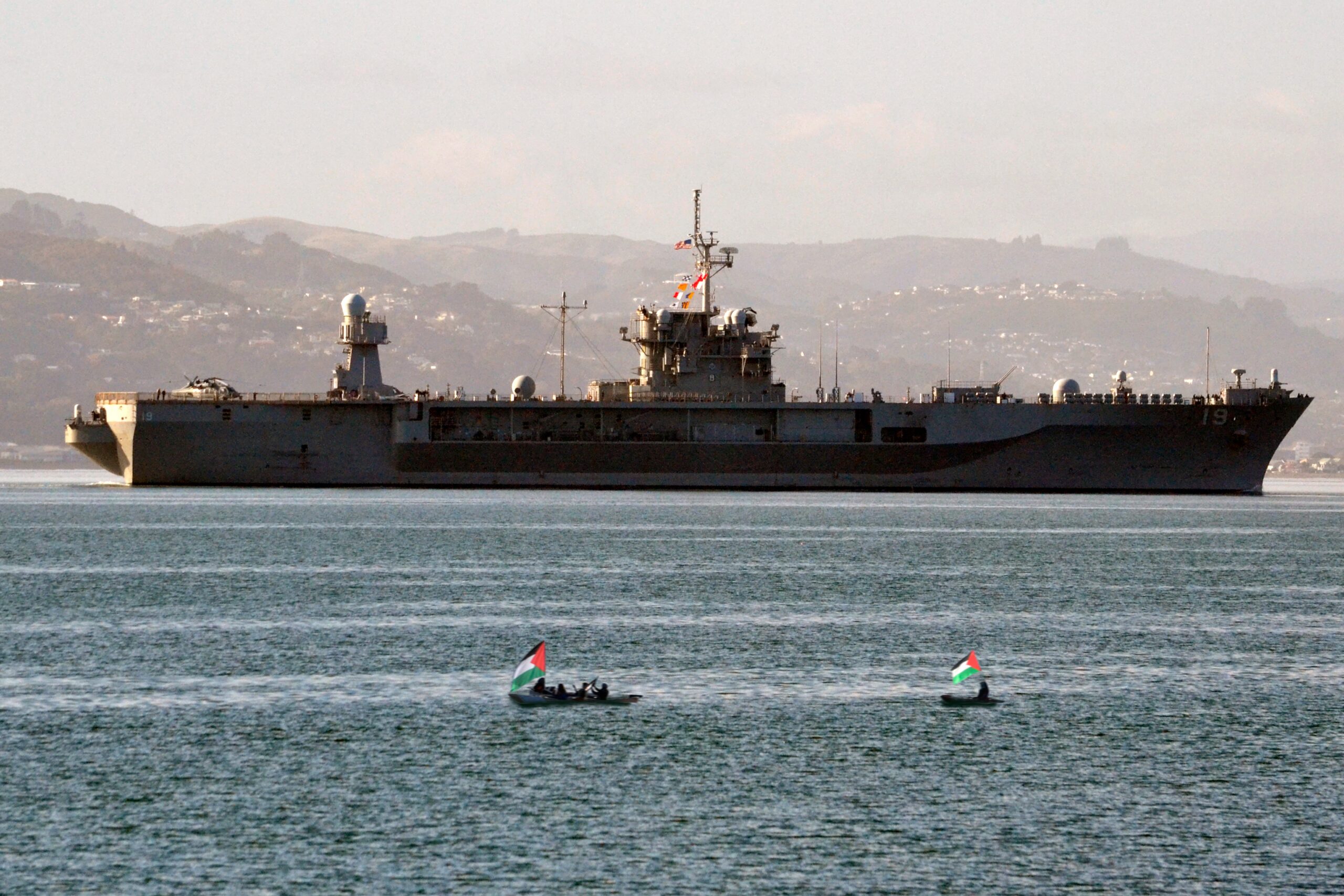North Gaza is famous for its strawberries. Harvest season, in the northern hemisphere, is from December through to March. Normally thousands would be employed gathering the fruit to bring it to market across Palestine. This year, as they were killing thousands of Palestinian civilians in their ongoing attacks, Israeli forces also used bulldozers and heavy machinery to destroy farmlands and crops.
Zeitoun, a neighbourhood south of Gaza City, is named after the Arabic word for olive. The olive tree is not just part of Palestinian culture: olive oil is central to what was left of Gaza’s economy and the stuff of everyday life. Bombs, tanks, and missiles have left the lands around Gaza City bare of trees.
Khan Younis is known for its citrus fruit. Many of us growing up in New Zealand will have known Jaffas as lollies before we ever connected the name with Palestine and made the association between orange flavours and Palestinian practices. Now the orange, lemon, grapefruit trees of Khan Younis are gone.
These images stick with me as reminders of what it means when we talk about this conflict as genocidal. Israel is not only killing Palestinians on a mass scale, with a brutality unrelenting across more than six months now. It is trying to destroy the very possibility of Palestinian life: food, farming, social reproduction, culture. The missing strawberries, olives and oranges are an image of what is at stake in this conflict.
And they are an image of Israel’s war as an ecocide.
Scholar Shourideh C. Molavi has written an important book, Environmental Warfare in Gaza (2024), a devastating account of what she calls ‘colonial violence’ and ‘new landscapes of resistance’. The ‘colonial violence’ links this current wave of violence to a decades-long Israeli project to contain, starve and demoralise Palestinians in Gaza. Israel’s blockade of the area has, since 2007, made everyday items and food supplies insecure and uncertain. Local produce, in this context, becomes more important than ever: The Washington Post reports that, in 2022, 40% of households relied on local production for their fruits and vegetables.
According to Molavi’s report, ‘since 2014, Palestinian farmers along Gaza’s perimeter have seen their crops sprayed by airborne herbicides and regularly bulldozed, and have themselves faced sniper fire by the Israeli occupation forces’. Since October 2023, ‘Israel’s ground invasion has uprooted most of these orchards and systematically targeted agricultural farmlands and infrastructure’ throughout the Strip. In her book Molavi shows, using Israeli court case material, how the army has long used aerial spraying of Roundup, and drift from winds, to damage Palestinian farmlands.
Before October 2023 roughly 47% of Gaza’s total land was agricultural. Just under half of that, according to the United Nations Satellite Centre, has been destroyed by Israel’s war. Molawi and her team, in their report, go into greater detail, and show how Israel has targeted crucial food and agriculture centres, glasshouses most importantly.
Details like this show why, when we say as socialists that the crises of this world are inter-connected, this is a call to action rather than an empty slogan. The genocide against the Palestinians is not just happening alongside the environmental crisis of our age: it is a part of that environmental crisis.
Carbon emissions from the first sixty days of military activity were greater than the annual emissions of twenty individual countries, according to research published in the Social Science Research Network Journal. Once the researchers took into account the work of eventual reconstruction in Gaza the costs of this attack in climate emissions will equal a year’s from New Zealand. This is an environmental catastrophe. When Palestinians resist to defend their life they are also fighting for the life of the land and, by extension, the planet and our place on it.
Food insecurity, housing insecurity and the issue of extreme heat are widely accepted as challenges for the twenty-first century. What happens too often, however, is that these challenges are presented as apolitical, technological, outside of the realm of conflict. Palestine shows us how caught up they are in the system of capitalism and oppression. Gaza is being made into a wasteland by Israel, and that project not only involves enormous waste – human, certainly, environmental, technological – in its prosecution, but it also leaves behind damaged soil, dangerous chemical deposits and military waste that will keep land from being used for human need.
Hadeel Ikhamis, head of the climate change unit in the Palestinian Environment Quality Authority, puts it like this:
‘Among all the problems facing the state of Palestine in the coming decade, climate change is the most immediate and certain, and this has been amplified by the occupation and war on Gaza…climate change impacts that affect Palestine include decreased precipitation, significant warming, more frequent extreme weather events, and a rise in the sea level…more frequent droughts and increased desertification, changes in the economic viability of crops…a decline in grazing.’
A backdrop to all of this remains Israel’s control of water sources. The fight over sovereignty and for a truly free Palestine is, in its essentials, a fight for a sustainable planet. That sustainability can only come about if we recognise that imperialism and capitalism are antithetical to environmental protection and human life. The Palestinians’ misery shows, starkly, the nonsense of all of the talk of phased transitions and sustainable targets (under threat from National, ACT and NZ First here now anyway, meagre as they were) repeated by ruling classes globally. The very ruling classes that talk so much about their green credentials, from the European Union to Biden’s United States, are Israel’s strongest backers.
Palestinians are resisting all of this, however, and in doing so offer us an image also of what environmental protection can look like. Molavi’s book captures Israel’s ‘colonial violence’ but ends with a chapter on ‘new landscapes of resistance’. The years up to October 2023 saw mass actions in Gaza, and across Palestine, on Land Day and as part of the Great March of Return that drew Palestinians together to defy Israel. Industrialising agricultural land, Molavi points out, is a global trend, and so Palestinians’ experience is an extreme example of what is happening in many places, and to many Indigenous people whose existence gets in the way of food companies’ profits. This creates potential bonds of solidarity: in Palestine, between food consumers in the cities and food producers on their farms, and between Indigenous land protectors and environmentalists globally. As long as Israel continues to impose ‘colonial violence’, Molavi ends her book, ‘novel and subversive frontiers of resistance to confront it will also continue to blossom’.
We owe them our active solidarity.
Sources
Ikhamis’s quote, and the facts from the Social Science Research Network journal, come from Ora Taiao NZ Climate and Health Council’s March 2024 Newsletter. Details on food production in Gaza, and on Israel’s assault, are from reporting in The Washington Post by Nilo Tabrezy, Imogen Piper and Miriam Berger (3 May 2024) and Muhammed Hussein and Muhammed Haddad for Al Jazeera (2 July 2024). Molavi’s report is published by Forensic Architecture online; her book is published by Pluto Press (2024).
Image credit: Palestinian farmers harvesting olives, November 2015. TrickyH via WikimediaCommons


